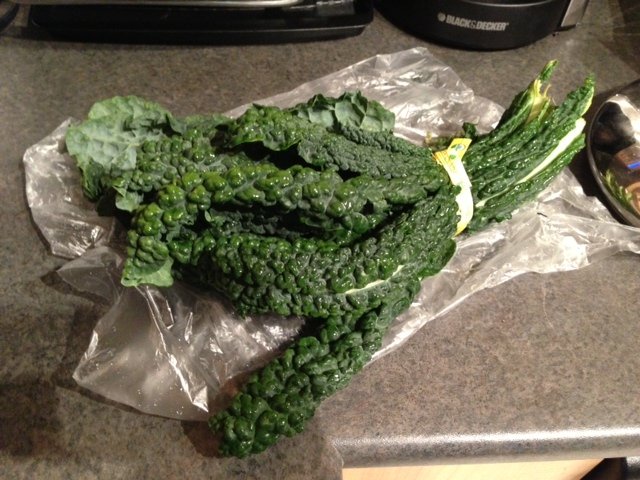Organic. Grass-fed. Local. Sprouted. Farms. Clean fifteen. Sustainable. Whole. Raw. Unprocessed.
Wouldn’t it be wonderful if we could eat in a way that jives with these words all the time? A diet fully and wholly of the best quality foods we could get our hands on. For health and for taste. I’m not here to convince you that eating healthy foods is inexpensive, especially if you have a family to cook for and feed. The truth of the matter is that buying good quality food can be more expensive than lower quality foods. Buying grass-fed or organic meat is more expensive than buying commercial meat. Buying organic produce is more expensive than non-organic. Buying free range eggs is more expensive than other varieties.
I’ll tell you what I believe, though. Using the highest quality food that I can afford to buy is preventative medicine, and much less expensive than disease and sickness. Short-term and long. In my profession and life, there are no sick days. Keeping my body functioning optimally is everything. Health is everything and you often don’t realize it until it’s taken from you, which could be in the form of a cold or flu, or a major debilitating disease.
You don’t have to buy every item of food you consume from the organic market. You don’t have to nickel and dime yourself and stop all activities you love to afford great food. Here are 10 easy ways to get you eating healthier foods without breaking the bank:
1. Eat smaller quantities of higher quality meat. This is exactly what I do. Beef up the rest of your meal with ingredients that cost less, but keep your animal protein quality high. Instead of eating just steak and a baked potato, add mushrooms fried in butter to your meal. You’ll feel satisfied and satiated by eating a smaller amount of meat, with your extra veggies and fat.
2. Fresh, frozen, canned. If the fresh version isn’t in your budget, try frozen or canned instead. Watch your canned items for added junk like salt, preservatives, etc.
3. Eat seasonally. Change your eating habits slightly as the season’s change. In the cooler months, stock up on squashes, root veggies, sweet potatoes, carrots, onions, garlic, pumpkin. In the warmer months, go for the tomatoes, berries, leafy greens, plums, corn. It will cost you less and you’ll experience much nicer flavours through your seasonal items.
4. Eat locally. Shop your local farms and farmer’s market. Such a great way to see where your food is grown and who is growing it. Farms and markets can be a great place to find inexpensive produce, and bulk meat, too.
5. Screw Superfoods (kind of). Don’t get hung up on the idea of having to eat all the Superfoods of the world every week (goji berries, acai, borage oil, seaweed, etc). Eat a wide variety of healthy foods and you’re going to be juuuuust fine.
6. Buy in bulk. This could mean 1/2 a cow to you, or an extra large bag of frozen fruit. Might cost you a bit more upfront, but will save you more in the long run.
7. Get your greens. Greens are such an inexpensive veggie that are so versatile. You can eat them with every meal of the day: Breakfast – sautéed spinach with your eggs and a piece of fruit; Lunch – a big old salad with mixed greens, cucumber, shredded carrots, some cheese, and 1/2 an avocado; Dinner – grilled chicken breast with mediterranean kale salad (http://www.canadianliving.com/food/mediterranean_kale_salad.php)
8. Up your fats. Fats are satisfying and satiating, meaning they taste great and keep you full for a good chunk of time. Add a tsp of coconut oil to your morning shake to help tide you over longer. Add 1/4 avocado to your egg and bacon meals, to decrease the amount of meat needed.
9. Follow the Clean 15, and go organic (or avoid) with the Dirty Dozen. If you can’t afford to buy all organic produce, just buy organic when choosing foods that are grown and sprayed with the most pesticides, such as apples, cucumbers, grapes, spinach, kale, and strawberries. You don’t need to go organic on these cleaner varieties: avocado, onions, sweet potatoes, bananas, mushrooms, and asparagus. (See the full lists here: http://www.ewg.org/foodnews/summary.php)
10. Cook from scratch. This is the best way to decrease your food costs. Cut down on the amount you’re eating out and you’ll get to pump that money into your grocery shopping budget. You dollar will stretch much further at the grocery store than it will at the restaurant.
Alright, now tell me yours. What did I leave out? What are your fave ways for saving money on your grocery bills?
JMG




![My fitness coaching was leading moms to feel like trash about their bodies. 🫣
As if they needed that when inundated with messages to “get their bodies back” and programs to fit back in their pre-pregnancy jeans.
‼️ AND AND AND. As if I could continue to contribute to them keeping their mental energy on their size of their stomachs (when so many people in the world are living within oppression and true horrors).
Not to mention…
👉🏻👉🏻 The more hyper vigilant my clients felt about their bodies, the more their pelvic floor symptoms RAMPED UP.
A pillar of our Prenatal and Postnatal Fitness Specialist Academies - our fitness and pelvic health coaching certifications - is supporting perinatal folks from a size inclusive, non-diet perspective.
🗣There are ZERO discussions and no guidance on how to help your clients get smaller bodies.
You can coach in this way, too. But, you’ll need to commit to it.
[SAVE $500] Enrolment is NOW OPEN for the Prenatal and Postnatal Fitness Specialist Academy! ✨
PFSA is unlike any other pre/postnatal or pelvic health certification on the market.
Savings end Thursday, April 25th at midnight PST! DM me “PFSA” and I’ll send all the details to you, so you don’t miss ❤️
#CesareanRecovery #PrenatalExercise #PregnancyTips #PrenatalExercises #PrenatalFitnessTrainer #ActivePregnancy #PostpartumPilates #PostnatalWorkout #PostnatalExercise #PostpartumTraining #PostnatalCheck #PostpartumExercise #SafeExercisePostpartum #FullBodyWorkout #ParentWorkout #WorkoutsForParents](https://jessiemundell.com/wp-content/plugins/instagram-feed/img/placeholder.png)

Jessie, I constantly wonder about organic vs. non-organic and GMO vs. non-GMO. Is there any real evidence to back up eating organic and/or, non-GMO food?
Good question! I love my Precision Nutrition and trust their advice. Give this a quick read: http://www.precisionnutrition.com/all-about-organic-foods